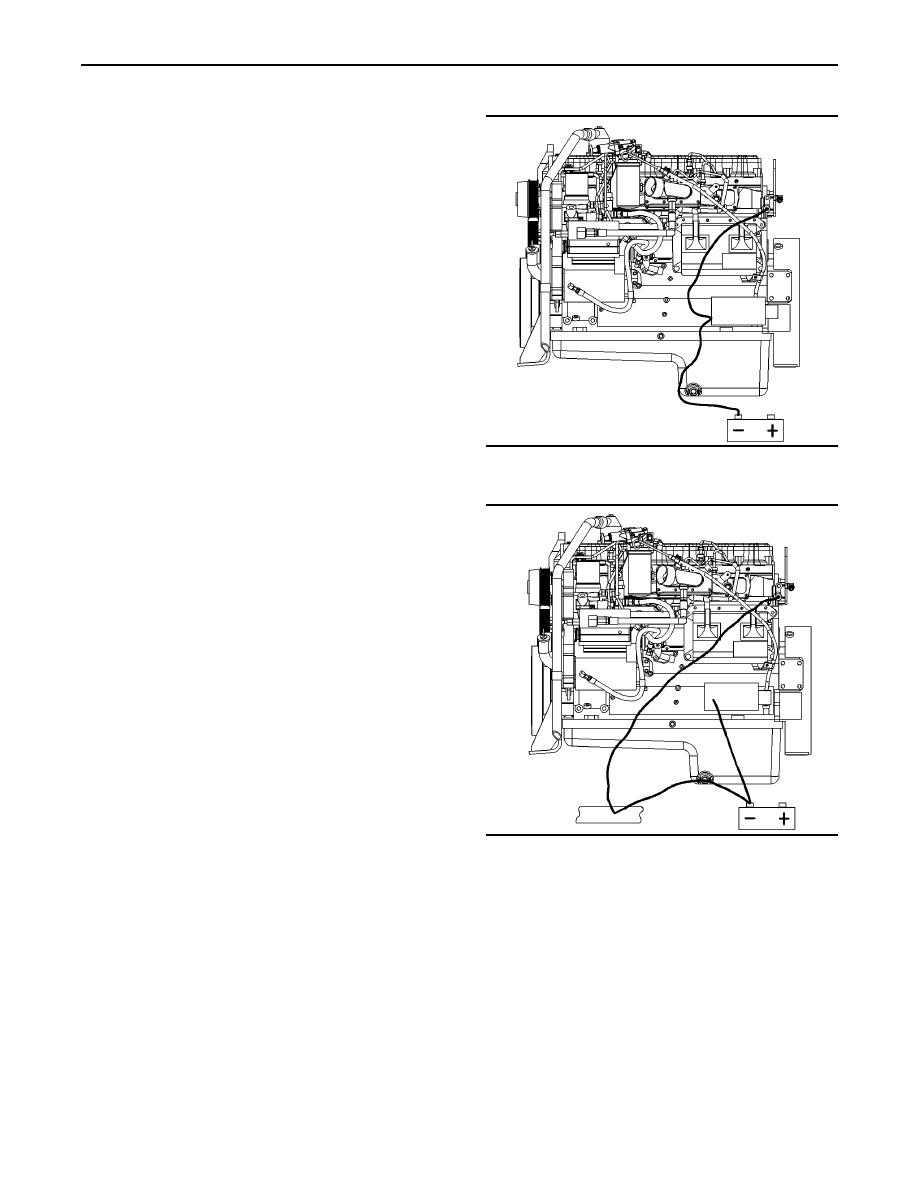 |
|||
|
|
|||
|
|
|||
| ||||||||||
|
|
 TM 9-2320-312-24-2
Systems Operation Section
As the camshaft turns, each lobe moves a lifter
assembly. There are two lifter assemblies for each
cylinder. Each lifter assembly moves a pushrod.
Each pushrod moves a valve (exhaust) or a set of
valves (inlet). The camshaft must be in time with the
crankshaft. The relation of the camshaft lobes to
the crankshaft position causes the valves in each
cylinder to operate at the correct time.
i01854525
Electrical System
SMCS Code: 1400; 1550; 1900
Grounding Practices
Proper grounding for the vehicle electrical system
and the engine electrical systems is necessary for
proper vehicle performance and reliability. Improper
grounding will result in unreliable electrical circuit
g00769833
Illustration 40
paths and uncontrolled electrical circuit paths.
Grounding Stud To Battery Ground ("-")
Uncontrolled engine electrical circuit paths can
result in damage to main bearings, crankshaft
bearing journal surfaces, and aluminum
components.
Uncontrolled electrical circuit paths can cause
electrical noise which may degrade the vehicle and
radio performance.
To ensure proper functioning of the vehicle and
engine electrical systems, an engine-to-frame
ground strap with a direct path to the battery must
be used. This may be provided by a starting motor
ground, by a frame to starting motor ground, or by
a direct frame to engine ground. An engine-to-frame
ground strap must be used in order to connect the
grounding stud of the engine to the frame of the
vehicle and to the negative battery post.
g00769834
Illustration 41
Alternate Grounding Stud To Battery Ground ("-")
The engine must have a wire ground to the battery.
Ground wires or ground straps should be combined
at ground studs that are only for ground use. The
engine grounds should be inspected after every
20125 km (12,500 miles) or every 250 hours. All of
the grounds should be tight and free of corrosion.
The engine alternator should be battery ground with
a wire size that is capable of managing the full
charging current of the alternator.
|
|
Privacy Statement - Press Release - Copyright Information. - Contact Us |